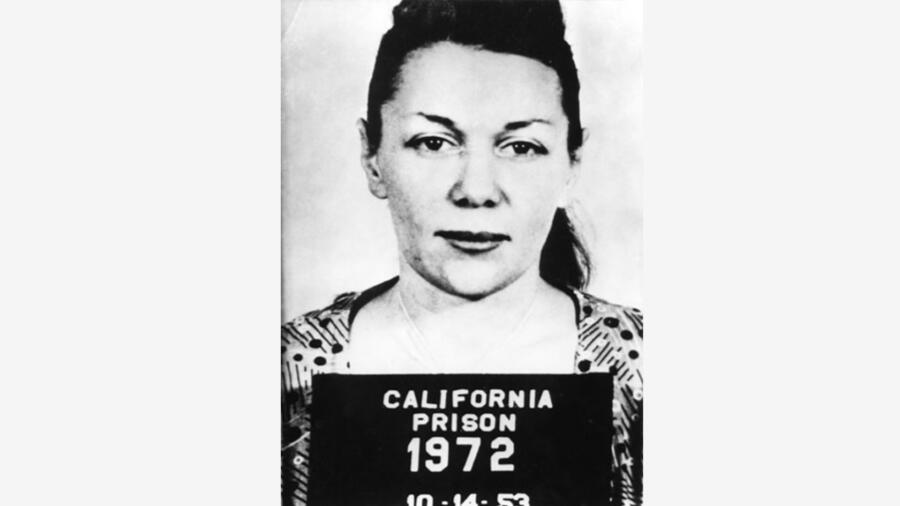On June 3, 1955, Barbara Graham died in California’s gas chamber, executed for a murder that shocked the nation. The press dubbed her “Bloody Babs,” and the world watched as a glamorous woman became the face of evil.
But was she truly guilty, or did the justice system get it horribly wrong?
Now, decades later, former L.A. prosecutor Marcia Clark, best known for leading the O.J. Simpson trial, has reopened the case. Through new investigations and uncovered evidence, she paints a disturbing picture of a flawed prosecution, suppressed testimony, and a possible miscarriage of justice.
Let’s explore why the Barbara Graham murder trial remains one of America’s most controversial and haunting capital cases.
The Brutal 1953 Murder That Gripped California
On March 9, 1953, police found Mabel Monahan, a 64-year-old widow, dead inside her Burbank home. Someone had tied her up, beaten her, and left her to suffocate.
The motive? Robbery.
Rumors swirled that Monahan kept a mob-linked fortune in a hidden safe. However, there was no safe—only blood, bruises, and unanswered questions.
Three suspects quickly emerged:
- Jack Santo
- Emmett Perkins
- Barbara Graham
Unlike the others, Graham drew intense public attention. She was young, striking, and had a criminal past involving forgery and perjury. Reporters branded her a femme fatale. Her nickname, “Bloody Babs,” soon filled headlines nationwide.
Inside the Barbara Graham Murder Trial: Flaws and Fabrication
The trial unfolded in the fall of 1953. Prosecutors built their case on two pillars:
- John True, a minor accomplice, claimed Graham struck the first blow.
- Sam Sirianni, an undercover officer, testified that Graham tried to buy a false alibi from jail.
Together, these testimonies painted Graham as the mastermind. The jury found her guilty of first-degree murder and sentenced her, along with the men, to death.
However, Marcia Clark’s investigation reveals this version of events may be deeply flawed.
Marcia Clark’s Discovery: Did John True Lie on the Stand?
Clark uncovered an original statement from John True, made before the trial, that directly contradicted his courtroom testimony. In his first version, True did not implicate Graham as the attacker.
Yet the prosecution withheld this version from the defense.
“Even in 1953, prosecutors were legally obligated to share all witness statements,” Clark explains. “Suppressing exculpatory evidence could have changed the outcome entirely.”
If the jury had known about True’s shifting story, they may have seen Graham in a very different light.
The Undercover Alibi Sting: Entrapment in Disguise?
During the trial, Sirianni claimed Graham offered him money for an alibi. What the jury never heard, however, was this:
🔴 Another inmate, Donna Prow, conspired with police to set up Graham.
🔴 Prow arranged the meeting between Graham and Sirianni, knowing the goal was to trap her.
Prosecutors never disclosed Prow’s involvement to the defense. As a result, Graham’s team couldn’t cross-examine or challenge the credibility of the sting operation.
“It wasn’t justice,” Clark says. “It was a setup—plain and simple.”
Was Barbara Graham Executed Because of Her Reputation?
Graham’s past made her an easy target. She had worked as a sex worker, forged checks, and lied in court before. Despite this, she maintained her innocence in the murder.
Public opinion, shaped by tabloids and pulp headlines, painted her as a seductive criminal mastermind. Yet the evidence, as Clark shows, was circumstantial at best—and manipulated at worst.
Could Barbara Graham Have Been Saved Today?
Clark firmly believes that in today’s legal system, Graham would not have been executed.
With modern standards of evidence sharing (Brady disclosures), forensic protocols, and procedural fairness, the hidden statement and questionable sting would have raised immediate red flags.
“This wasn’t just a mistake—it was a failure of justice,” Clark concludes. “Barbara Graham’s life was taken without a full, fair trial.”
Hollywood and the Legacy of ‘Bloody Babs’
In 1958, the film I Want to Live! dramatized Graham’s story, portraying her as a victim of a flawed system. Academy Award-winner Susan Hayward’s performance added emotional depth to a woman many viewed as a cold-blooded killer.
Even so, the real story behind the Barbara Graham murder trial is far murkier. Clark’s findings invite a crucial question: Did the state execute an innocent woman?
FAQs: Barbara Graham Murder Trial
Who was Barbara Graham?
A former sex worker and single mother convicted of murder in 1953 and executed in 1955.
What was she accused of?
Killing 64-year-old Mabel Monahan during a botched robbery.
What was the key evidence?
Testimony from an accomplice (John True) and an undercover sting operation.
What did Marcia Clark uncover?
Hidden statements, suppressed evidence, and proof of entrapment that question Graham’s guilt.
Did the media influence her trial?
Yes. Graham was branded “Bloody Babs,” and negative press heavily shaped public opinion.
Was she likely innocent?
Marcia Clark believes that had the full evidence been presented, Graham would not have faced execution.

